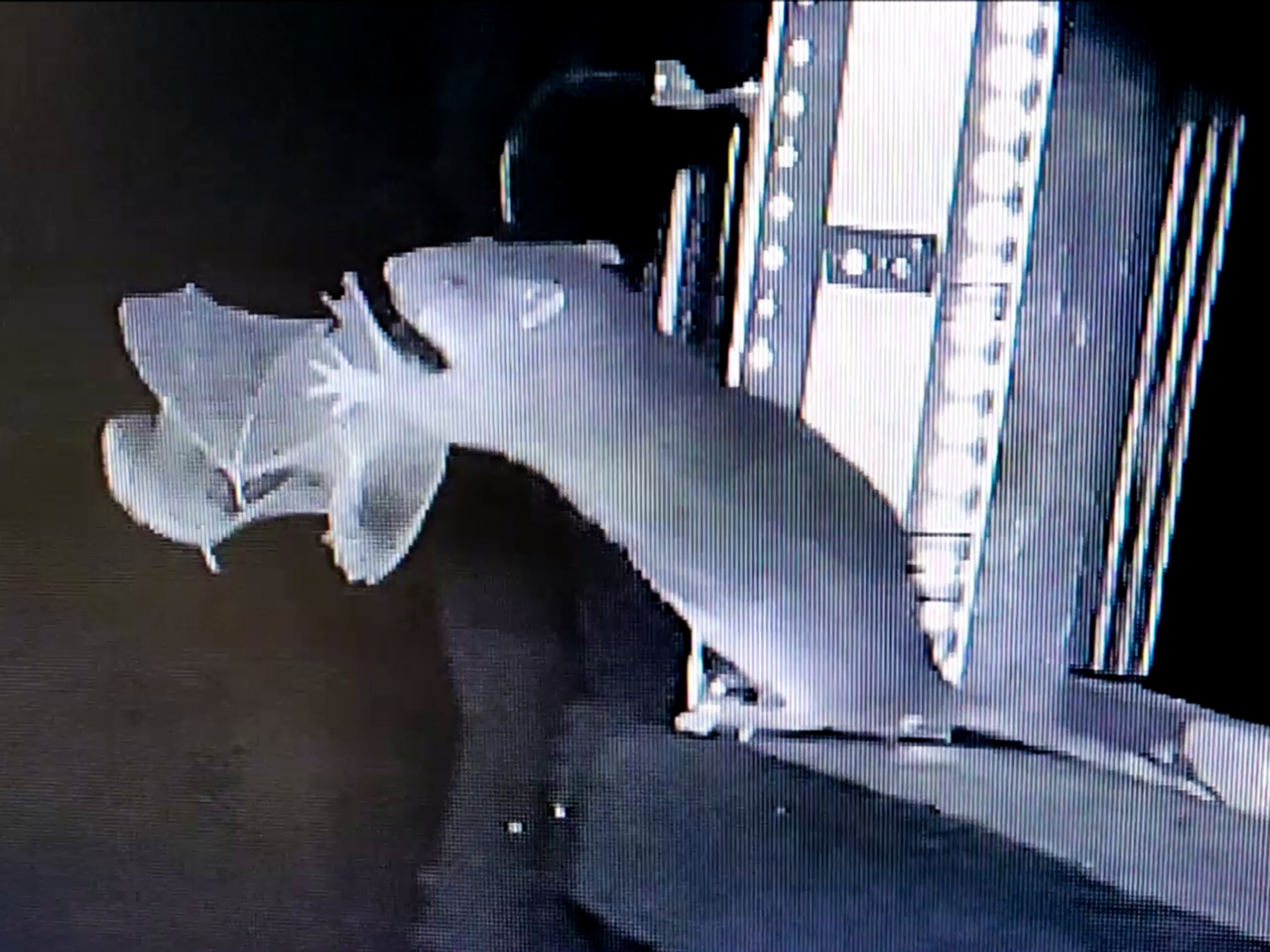‘Ninja' rat kicks snake in midair in amazing slo-mo video
The rodents are 30 milliseconds faster than a rattlesnake's strike—and most live to see another day.
For a furry pipsqueak in the deserts outside of Yuma, Arizona, finding dinner means tiptoeing through a minefield of spring-loaded death.
Sidewinder rattlesnakes sit in the sands, still as stone—just waiting for one of their favorite prey, the kangaroo rat, to wander too close.
But according to a pair of new studies, kangaroo rats are not as helpless as we thought. Indeed, a series of slow-motion videos have revealed that the rodents can detect their predators’ strikes within fractions of a second, leaping out of harm’s way with their powerful hind legs.
And sometimes, even when a snake’s attack hits its mark, kangaroo rats can karate-kick the serpent away before it can inject any venom—a feat all the more miraculous when it’s done while spinning in midair like a fuzzy little ninja. (Read how some snakes gang up to hunt prey.)
That’s all thanks to the kangaroo rat’s well-developed sense of balance, says Rulon Clark, a behavioral ecologist at San Diego State University and senior author on both studies.
And unlike many other prey species, Clark says the kangaroo rats’ jumps are not simply random startle reflexes.
“They’re complex and almost graceful movements,” he says, a “ballet of jumping and twisting and kicking.”
Clark and his team have been studying this behavior for years, but new, slow-motion camera technology has allowed them to now reveal intricacies of the desert duels never seen before.
Alive and kicking
What’s even more remarkable is how often the rattlesnakes go home hungry.
After many nights spent in the desert, Clark and colleagues videotaped 32 strikes from 13 snakes. Surprisingly, the team showed that the reptiles actually bit into the rats on less than half of their attacks (15), and of those, just seven strikes resulted in their deploying venom and getting a meal. In the other eight instances, the kangaroo rats leapt and kicked their way to freedom.
Even more often, the kangaroo rats jumped out of the way of a strike before getting bitten (11), or the snake misjudged the rodent’s distance and missed altogether (6), according to the recent studies, published in the Biological Journal of the Linnean Society and in the journal Functional Ecology.
The researchers also learned that the speed of a sidewinder’s attack did not correlate with success. That is, it was more important for the snakes to be accurate than fast—and even then, the kangaroo rats could negate the predator’s efforts with a swift foot to the face.
“When snakes strike, it’s like a bullet coming out of a gun,” says Bree Putman, who was not involved in the new studies but has studied a similar dynamic between California ground squirrels and Pacific rattlesnakes. “They can’t really change the trajectory of the strike once they’ve initiated it.”
Plenty of prey species have developed ways to sidestep or jump out of a snake’s trajectory, says Putman, who is currently a postdoctoral research fellow at University of California, Los Angeles, and the Natural History Museum of Los Angeles County.
“What’s really surprising about the new research is the fact that the [kangaroo rat] is actively kicking the snake mid-jump,” says Putman. “This is a new behavior that hasn’t been recorded before.” (See what a rat looks like when it's happy.)
Science in the desert
While the videos are spectacular, the scientists admit that 32 strikes is too small a sample size to make many conclusions.
But given what it took to film what they did, it will have to do for now.
To study these interactions, the scientists first had to track the sidewinders by following their S-shaped markings in the sand. They then surgically implanted the reptiles with temperature-sensitive radio transmitters that allowed them to find the snakes each night. (Learn more about desert-dwelling animals.)
Even with this tracking technology, the researchers often had to walk for miles in the desert darkness before finding a suitable snake to focus the cameras on.
“We would then hike close to 500 pounds of gear out to wherever the snake was,” says Grace Freymiller, a doctoral student at San Diego State University and lead author of the study published in the Biological Journal of the Linnean Society.
And once everything was set up, there was nothing left to do but hunker down and wait for a kangaroo rat to appear—not unlike a sidewinder rattlesnake.
“There's something really serene about sitting in complete darkness out in the desert,” adds Freymiller, “where it's often so quiet that you can hear your heart beating.”





